The Buda Castle is a location where visitors are not to be bored because it constantly offers new surprises: something can emerge from the ground at any time, which even the experts thought had been destroyed, or which no one knew existed. Just think of the Sigismund era road recently unearthed under the Savoyai Terrace during the laying of utility lines, the discovery of which created a sensation precisely because it is an area that has been extensively researched and believed to be excavated.
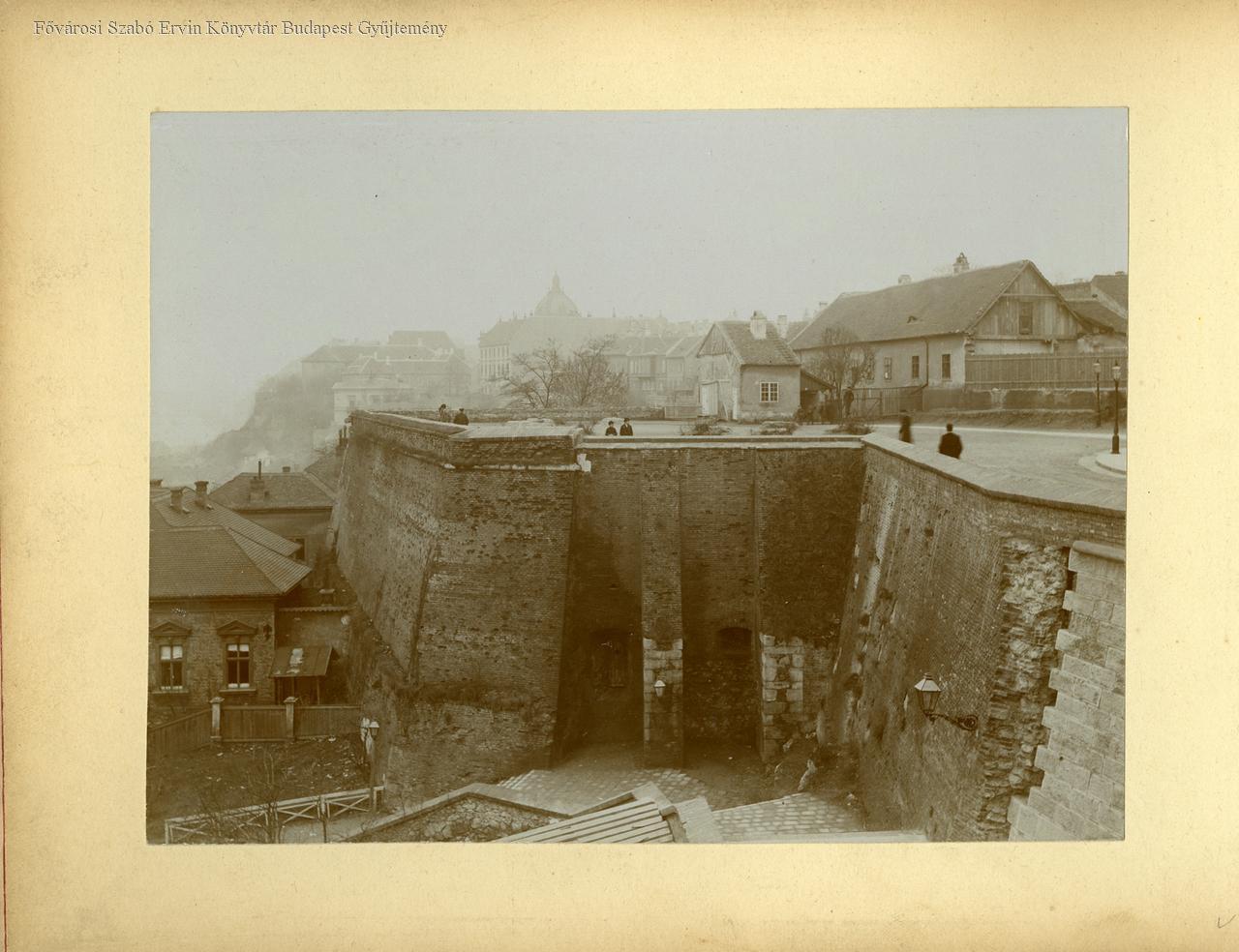
The old Fisherman's Bastion before 1899, opposite is the wall behind which Frigyes Schulek found the "casamatta", that is, the Saint Michael's Chapel (Photo: FSZEK Budapest Collection)
However, there were many more surprises in the 19th century. In 1899, Frigyes Schulek, who designed the reconstruction of the Mátyás Church and the Fisherman's Bastion, came across a large cavity when he was laying the foundation for the southern bastion wall, in which "a large number of human skull fragments and many intact complete skulls were found", says the 1899 report of the Public Works Council. Schulek identified the hollow as one of the Castle's dungeons (his "casamatta" in contemporary usage) and modified the plans of the bastion so that the hollow could remain intact in its original form: and - as the already quoted report states - "this interesting detail of Buda Castle's remained medieval fortifications and the finds found there and may still be found there should not be blocked from future historical research", the door and window of the chamber were finally closed with a thin, easily breakable wall.
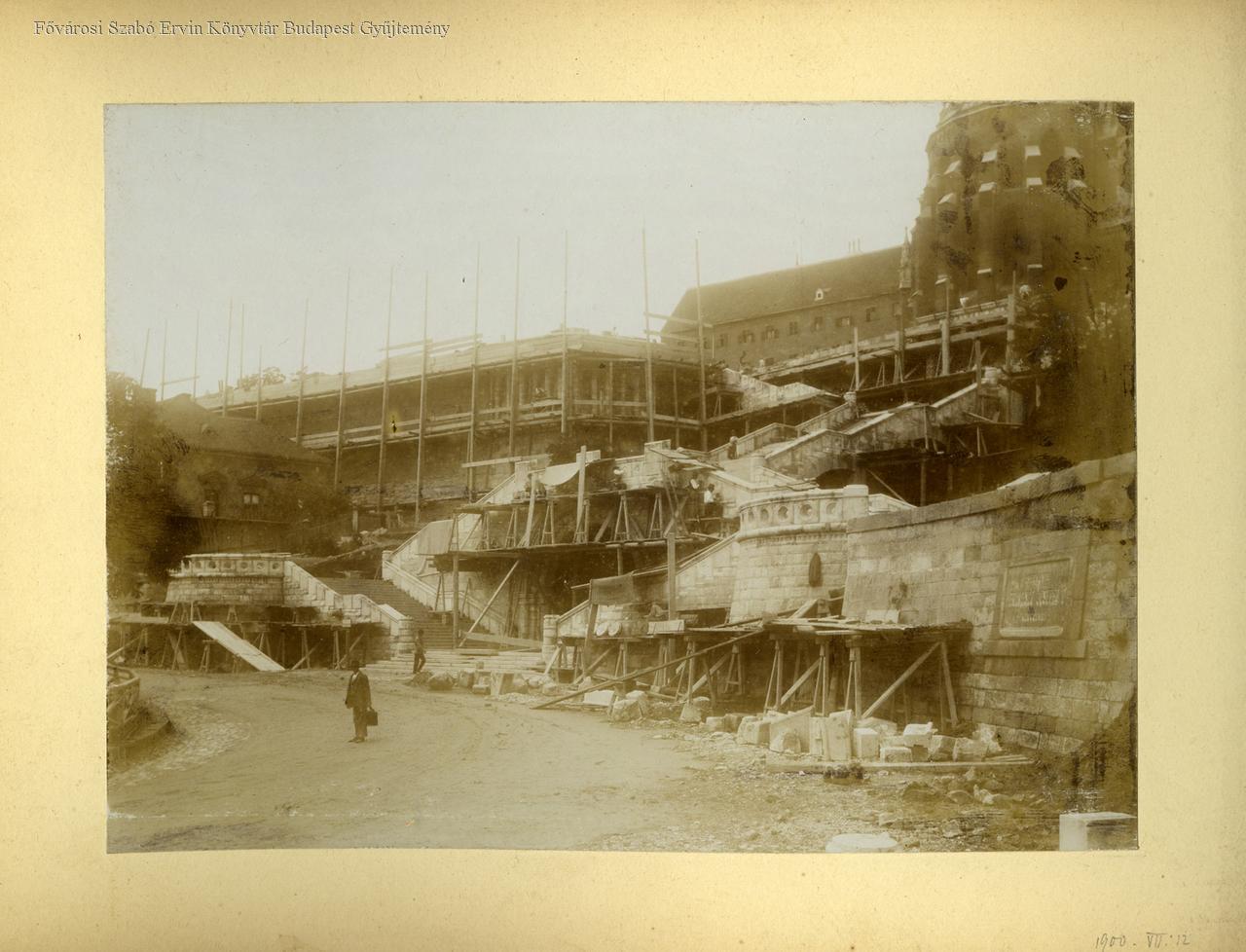
Construction of the Fisherman's Bastion in 1990: preparation of the later Schulek Staircase (Photo: FSZEK Budapest Collection)
The closed hollow was then forgotten again, until in 1961, archaeologists Győző Gerő and László Zolnay found it based on a map from the 1730s, Matthey's site plan and written data from the time. At that time, it was surveyed, and a few years later, in 1965, the chapel was re-discovered during utility construction work, in which further excavation work was carried out. As the 30 December 1965 issue of Petőfi Népe puts it, archaeologists "during the rescue excavation extending into the freezing weather - next to the famous statue of St. Stephen and the so-called Seven Leaders Staircase of the Fisherman's Bastion - uncovered a larger section of the foundation walls of a chapel that had been bombed down to the foundation walls during the siege of 1686 ".
Although he refers to it as a dungeon, Frigyes Schulek could already have guessed the original function of the cave (this is also confirmed by Lívia Farbakyné Deklava's 2017 volume written about Schulek), since he preserved it, but in the 1960s it was already known that it was a medieval chapel, which Győző Gerő identified as the 15th century (first mentioned in 1443) St. Michael's Chapel. The two-nave, 12-metre-long and 7-metre-wide interior structure was found to have side walls from the 15th-16th centuries, but the arches of its barrel vault are from later, from the 1700s.
The chapel dedicated to Saint Michael, revered as the patron saint of the dead, was once surrounded by a veritable necropolis: in the Middle Ages, the cemetery of the Mátyás Church was located here, so the unearthed structure actually served as a cemetery chapel. However, according to the sources, several chapels once stood in the area, i.e., around the sanctuary of the Mátyás Church - in addition to St. Michael's, there were also chapels named after St. Ladislaus, the Three Wise Men, and the Assumption of the Virgin Mary - but there are still questions about their identification.
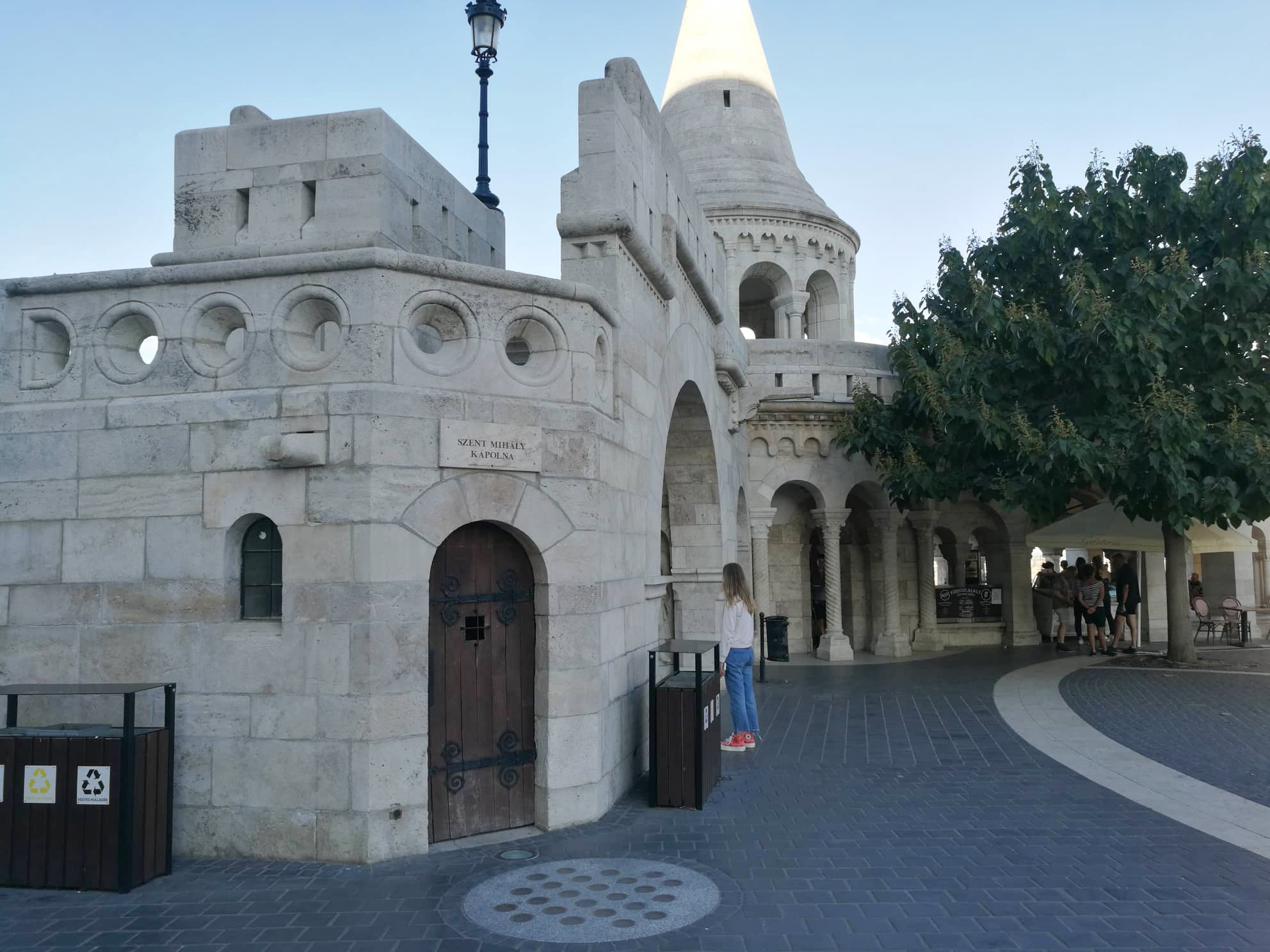
The entrance to St. Michael's Chapel today (Photo: Péter Bukovszki/pestbuda.hu)
The chapel discovered again in the 1960s, had to wait several decades for it to be re-excavated and made accessible to the public. The building was finally opened to the public on 20 August 1997. Since then, it has mostly been used for smaller events and exhibitions, but most of the time it remains closed, visitors of the Fisherman's Bastion can thus mostly only know its entrance.
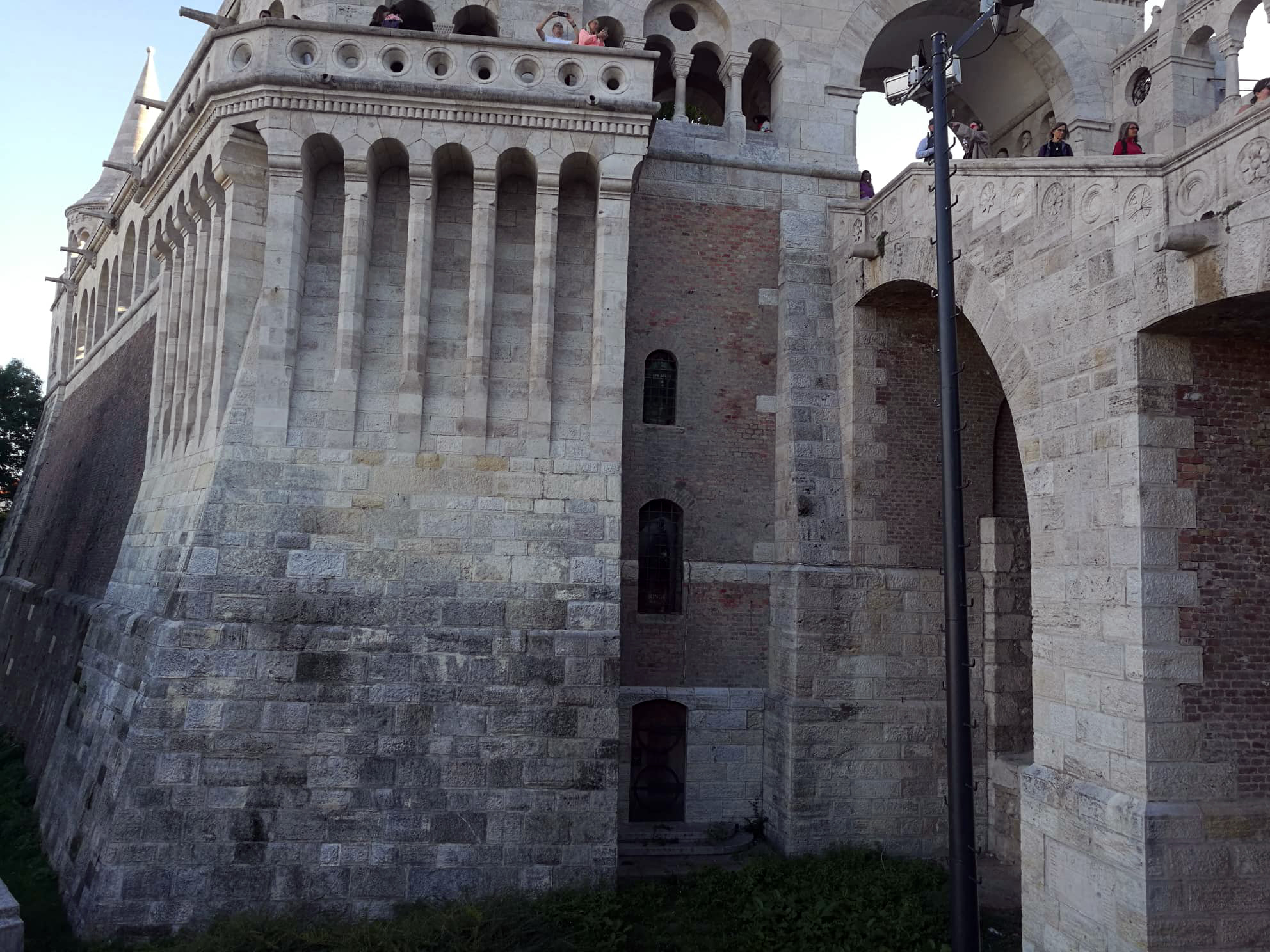
The window and door of the chapel, and below it the door cut later in the 1990s in the castle wall below the Fisherman's Bastion. The openings were bricked up until the renovation in 1997 (Photo: Péter Bukovszki/pestbuda.hu)
One more interesting detail reveals the presence of the chapel: if we stand on the Schulek Staircase and not only look at the dazzling panorama, but also look to the left, in the castle wall below the Fisherman's Bastion, we can notice the former chapel's window and door previously walled up by Schulek and rebuilt again during the later excavation, and a later opened door at the base of the wall.
The next time we walk towards the Fisherman's Bastion and look at the small openings, we will surely remember the St. Michael's Chapel, believed to be forgotten and then rediscovered, an interesting medieval relic of the Buda Castle.
Cover photo: The Fisherman's Bastion and the Schulek Staircase seen from Hunyadi János (Albrecht) Road. Statue of János Hunyadi on the right, Mátyás Church in the background, taken by György Klösz in 1906 (Photo: Fortepan/Budapest Archives, Reference No.: HU.BFL.XV.19.d.1.08.126)

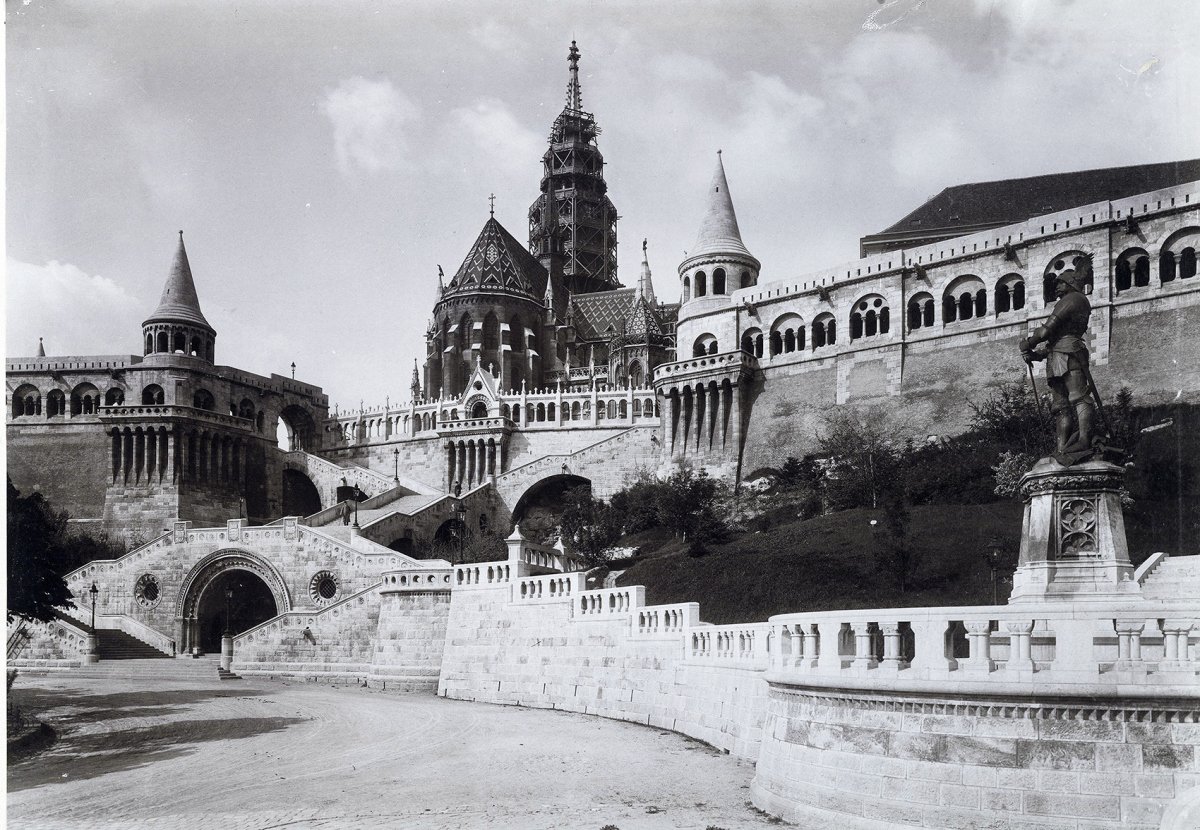


































Hozzászólások
Log in or register to comment!
Login Registration